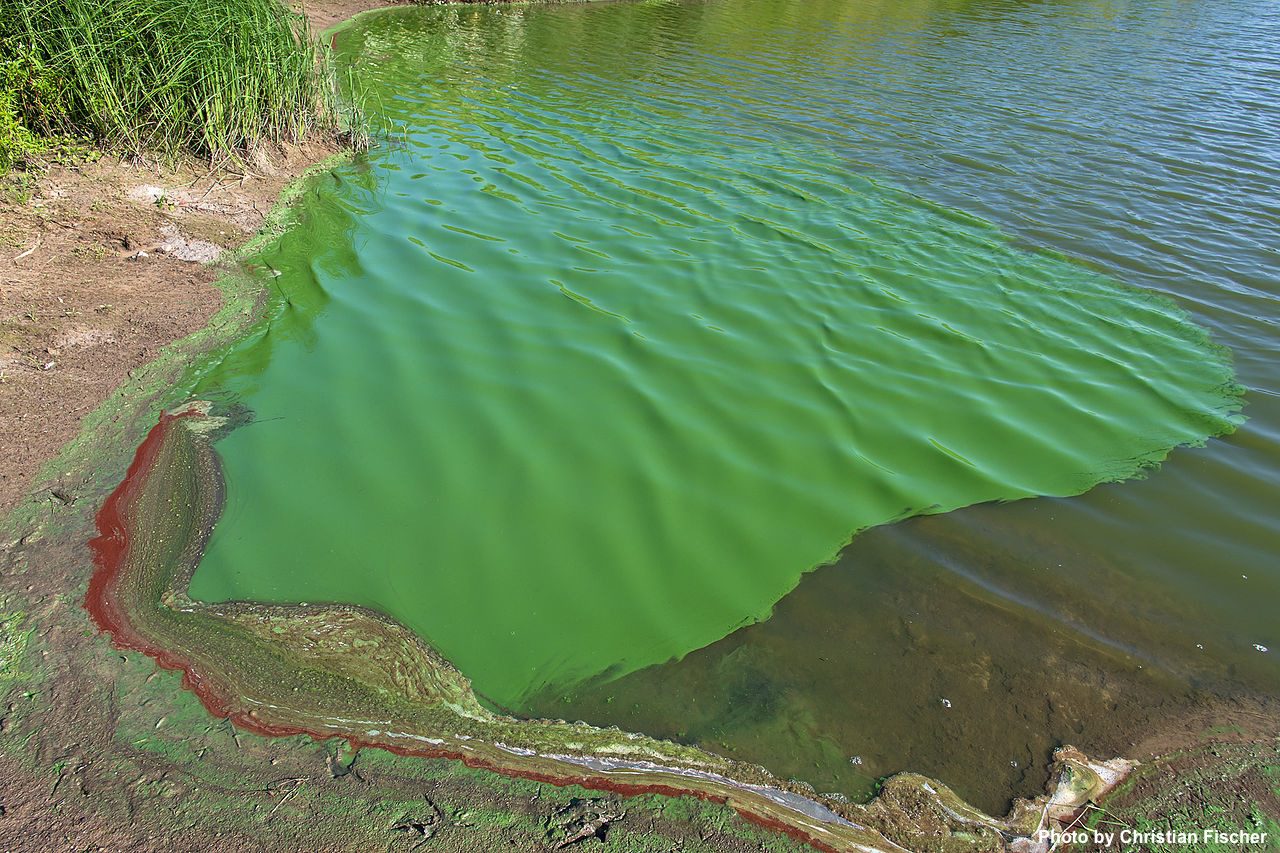Wednesday April 1, 2015

Algal blooms in freshwater lakes are often considered a harmful side effect of human land-use practices that shed excess nutrients into waterways, through sources like farming runoff and pollution. However, a new study from a multi-institutional collaboration lead by Dartmouth College shows that these external nutrient sources are not always needed for algae to thrive. Cyanobacteria, also known as pond scum or blue-green algae, can actively create the environmental conditions that allow them to keep growing in clear freshwater lakes, despite a lack of nutrients, the paper highlights. This work, recently published in the journal Ecosphere, can help scientists understand the causes of algal blooms that may threaten precious freshwater resources.
Blooms occur when algae populations explode in a short time period, often fueled by an influx of nutrients. Cyanobacteria blooms, which often appear as an unsightly green scum on the water’s surface, can produce toxins that poison fish and other organisms (including humans), and can also reduce oxygen availability in lakes, creating dead zones. Low-nutrient lakes are an important source of drinking water, recreation, and fisheries – and it turns out that even lakes with few nutrient inputs are more susceptible to algal blooms than we knew. Cyanobacteria depend on nitrogen and phosphorus to survive, two nutrients found in high concentrations in fertilizers – but fertilizer is not the only culprit leading to blooms. Cyanobacteria have the unique ability to tap into sources of phosphorus and nitrogen that aren’t accessible to other forms of phytoplankton. Some cyanobacteria can fix dissolved nitrogen gas into an organic form, while others can access phosphorus found in sediments.
When the cyanobacteria die and decompose, they release these acquired nutrients into the lake water, making them available in forms that other types of algae can use. If this cycle continues, what was once a clear lake could become clouded with different types of algae. In this way, cyanobacteria can have a large influence on lake nutrient cycling, the study authors point out, and can help drive a regime shift in a lake from a clear, low-nutrient state to an algae-filled, high-nutrient state. A better understanding of the way algae can manipulate environmental conditions in fresh water could allow scientists to develop new methods to predict future blooms and find ways to prevent them. So think twice before dismissing pond scum as inconsequential – they might be the drivers of their own destiny.
